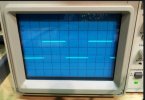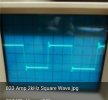From a casual observation tube equipment measures poorly compared to solid state. However, many people say tubes sound better. How is this possible? From personal experience, I have noticed some poorly measuring tube amps will raise the hairs on the back of my neck while listening to Sade. It is as if she were breathing on my neck and ears. However, I have also noticed I do not get this same physical reaction with some very well-measuring solid-state amplifiers. The scientific part of me says this is bullshit but my physical response is undeniable. How can I get these two sides of my brain to agree? I want to believe if it can't be measured it does not exist yet the goosebumps on my neck do not lie. Has anyone else had this experience?
someone somewhere will piss on my toes for saying this.
out of all the solid state amps ive heard, one of the outstanding ones was MSB, for some reason it was great, and it was on a s5 speaker. in the last nine of so months the mcintosh's ive heard were okay-okay. but here the thing, most amps in the solid state range to me sound generally neutered, missing boom, and sorta flat sounding. some people say, "you need to eq" but im its still as a standard in reference setup just flat and ball less. the msb, and like one other amp impressed me but they were really expensive.
now ive learned that when listening to most tube amps at low to low-mild volumes you'll never hear any of the tube amp "distortion" complaint solid state guys tout, but when you drive a tube amp it will have that tube shimmer/distortion but that's supper distinctive and different in every amp. then there are some high end amps with tubes, and you can turn those things up to 100-110 db and there zero distortion, you get that tube BOOM, and there's a sound stage. some amps dont really break up, but you pay for that loudness volume quality. im sure there are affordable great sounding tube amps too.
the guys who talk about tube distortion its true, but can we hear it? maybe in bad tube amp circuits, or noisier circuits when turned up with unstable transformers. there are some phenomenal mono block setups out there that are just like full on turbo charged amps. and the tubes serve near zero drawback. the solid state guys may be technically right but they are bias. some tube amps right out of the box dont need any real eq except for room correction. they have a concerto boom and snare snappiness similar to a high speed paper snapping. its just insane how some of these amps work. i like tube amps. and when i finds a solid state that i feel sounds as good or better i can afford, i will deff let people know i got it.
tube amps can be crappy and they can be brilliant. when i got my first hifi tube amp i thought it was great till i learned about loud music.


